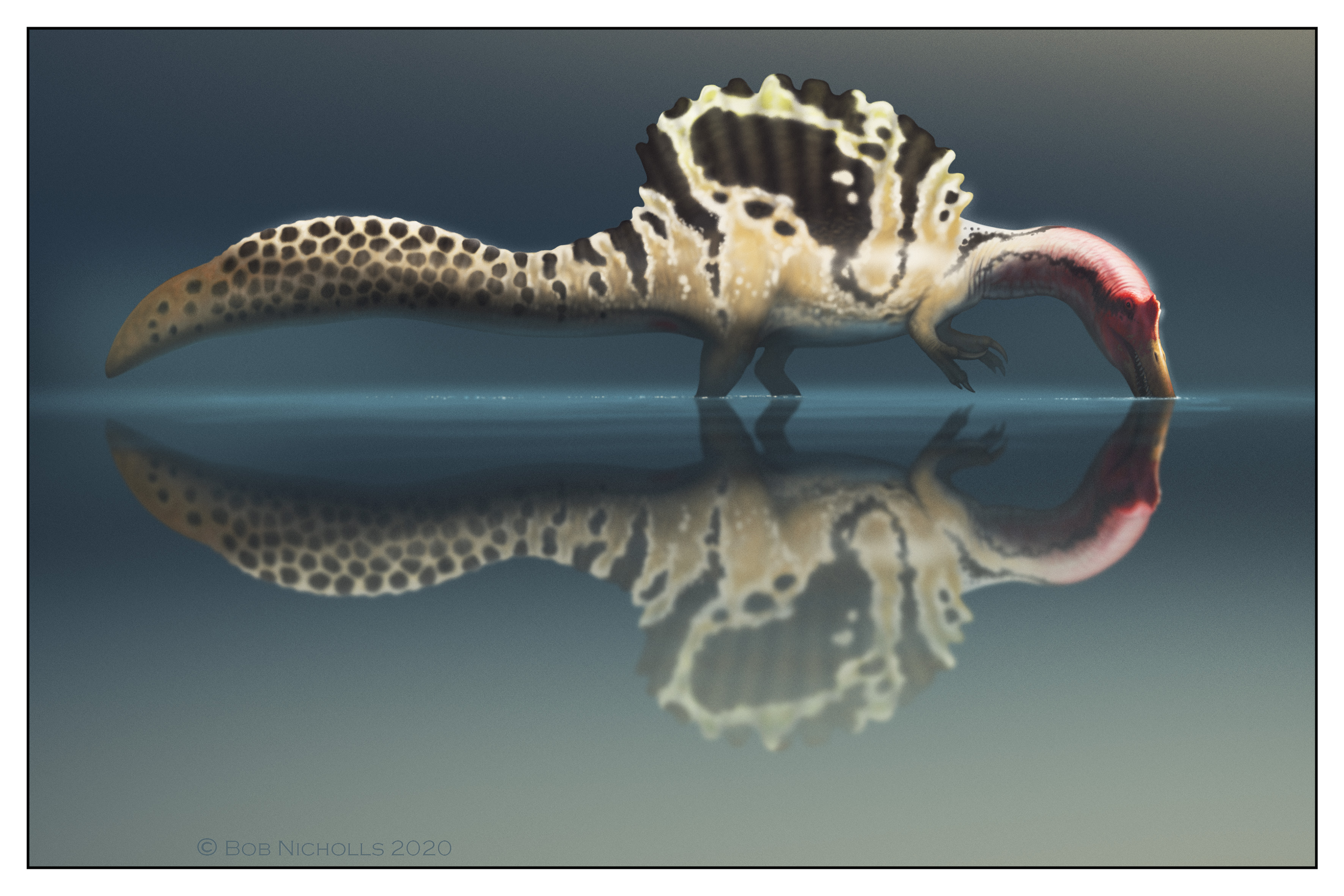New ideas (or at least new papers reviving ideas) on the appearance, behaviour and ecology of dinosaurs are often accompanied by a wealth of new palaeoart as people get invigorated and inspired by potential ideas and want to create them. The flipside of this is that there is a tendency for the previous ideas to be immediately written off as being wrong or out of date. Given the huge volume of images of Spinosaurus that have been produced in the last few years off the back of the swimming hypothesis, I think this is therefore probably worth addressing.

As we say clearly in the paper (and I said in an earlier post), there’s no reason at all to think Spinosaurus did not swim (pretty much all tetrapods can) and it was hanging around, and in, water really quite a lot. I don’t think it was swimming that much though, and diving would have been strenuous and difficult, but probably not impossible. Even animals we don’t think of as swimmers can at least get in and around water – I once saw a large grey heron in Japan dive into the water from a high river bank, get completely submerged and come up a few seconds later. That doesn’t mean that’s normal for that individual let alone the species, but depicting a heron underwater grabbing a fish would not be wrong.
In short, the vast majority of sketches, drawings, paintings and even videos of Spinosaurus underwater are not now suddenly wrong, inaccurate, or dated. Still, if you think that the wading model is something worth illustrating or if you have seen other ideas and hypotheses in the paper and want to use that on the next round of Spinosaurus (or indeed other spinosaur) illustrations, here’s a few key points and details and suggestions. As above, none of these are inherently correct at this point, but these all come up and would be relevant if you were trying to do an animal according to our ideas in the paper.
We suggest that the tail ‘fin’ may have been a display structure (in addition to the dorsal sail and the head crest) and as such could have been brightly coloured or patterned with strong contrasting colours. We also noted that crocodylians do a head-and-tail-up display posture in water which would be a potential option for a spinosaur.
Based on work done on Irritator, the head may have been typically held at 45 degrees (though there’s lots of variation seen in these value as per the excellent recent bovid study on head posture). This could well be close to a natural posture when foraging with the snout underwater (and we reference this specifically in one of our figures).
This is one that seems to get missed. We don’t have a single good full Spinosaurus skull but we do have a good idea of the nostril position and it’s a long way from the top of the snout. There is a question about how far forwards it is, but it’s very much not near the front or top of the snout. If foraging with the snout underwater, the nostril is usually going to be kept clear of the water.
And on that note, we propose that the snout would likely be below the surface normally, either when waiting for fish to come past that can be attacked, or possibly even shovelling around the bottom. (Come to think of it, we don’t really explicitly state this in quite these words, but we do talk about stork and heron-like behaviours, and show a stork foraging stirring up mud and reference searching for benthic things, so I think we cover both of these possibilities in what we have written).
If the animal is foraging while standing in water would not be too deep so that it wouldn’t float. This would probably be anything up to the belly (or of course much less).
We did also suggest that it may have made crocodile like thrusts into water to grab things, using the legs and tail and probably generating a lot of splash.
It doesn’t have to be in or even near water. There’s good evidence that some were spending considerable periods on land as ‘normal’ theropods.
A lot of things were probably on the menu apart from fish. We know from isotopic data that some individuals were eating herbivorous dinosaurs and the like with little or no aquatic prey in the diet and the tooth and skull structure point to Spinosaurus at least having the capacity to eat things like turtles and crustaceans, while we know other spinosaurs took dinosaurs and pterosaurs, and it probably scavenged too.
In short, there’s lots of opportunities to expand the range of things Spinosaurus is shown doing (OK, so those opportunities were already there, but here’s some specifics with reasons) and hopefully this will help give some hints and tips. I’ve already seen lots of new artwork popping up, in addition of course to the wonderful rendition that Bob Nicholls did for us (shown at the top) that has already been plastered round the web. Coupled with the (revised? alternate?) skeletals that are out there by Scott Hartman and Get Away Trike (which we used in our paper), this should be a productive time for drawing this and other spinosaurs outside of them being deep underwater. Pencils and tablets at the ready!

What about Spinosaurus like a giant duck, swimming on the surface with its tail?